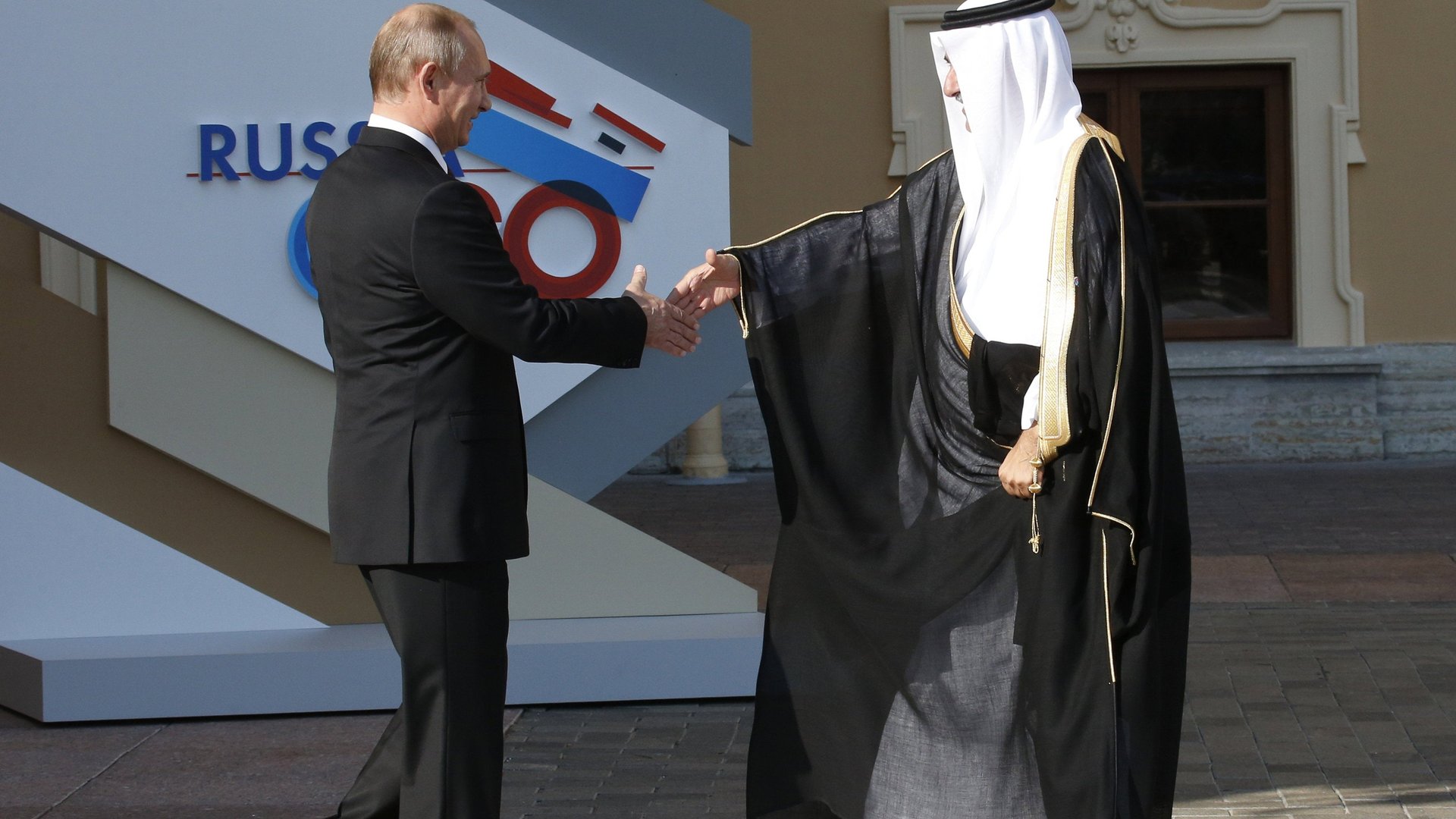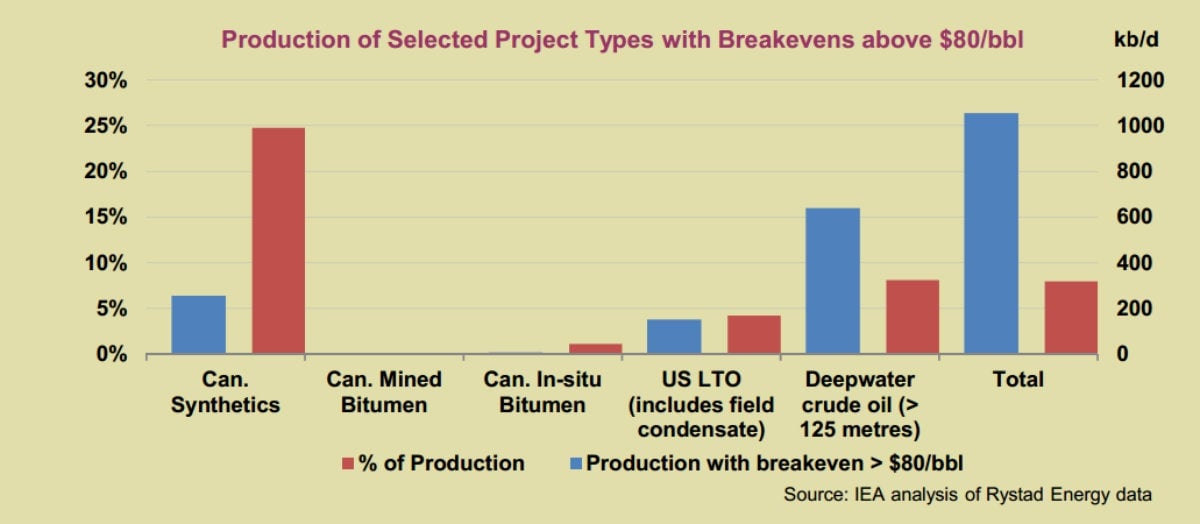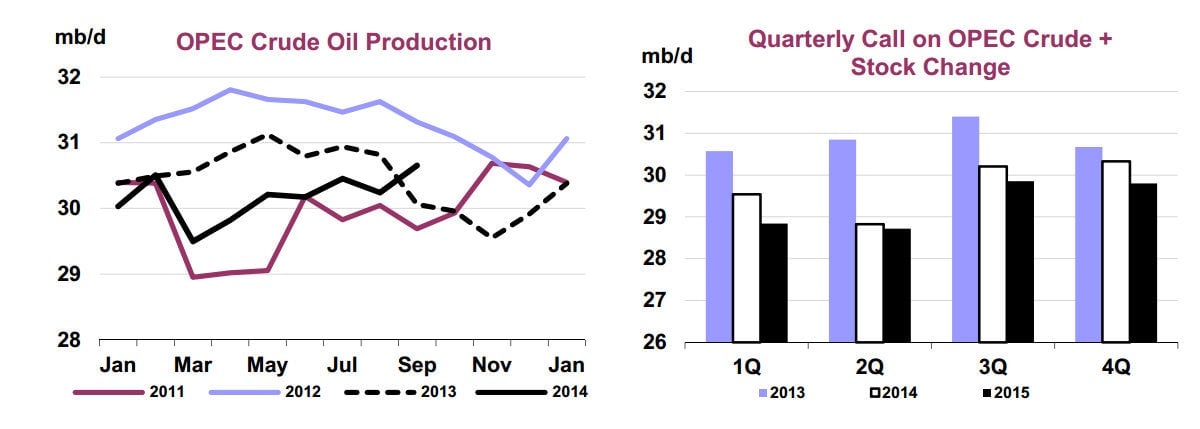Petro-dictators are in even more trouble than we thought a few days ago
On Oct. 9, we said the outlook for the world’s petrocrats looked bad. It just got worse: Saudi Arabia has been hoping that producers of American shale oil will be forced to begin cutting back given the plunge of oil prices, but the International Energy Agency (IEA) said today that prices can fall a good deal more.


On Oct. 9, we said the outlook for the world’s petrocrats looked bad. It just got worse: Saudi Arabia has been hoping that producers of American shale oil will be forced to begin cutting back given the plunge of oil prices, but the International Energy Agency (IEA) said today that prices can fall a good deal more.
What does that mean for geo-politics? Admittedly long-shot nuclear talks with Iran that resumed today in Vienna may stand a better chance of resulting in a deal. And Russian leader Vladimir Putin may be more conciliatory with Ukraine in gas-price discussions that begin next week.
Shale oil producers will be less affected. Two weeks ago, a leading Saudi oil official said (paywall) that US shale requires $90-a-barrel prices in order to stay profitable. Today, the price of internationally traded Brent crude crashed below $87 a barrel and was trading as low as $86.17, a 25% drop from the June price of $115.71.
In a report this morning, the IEA said oil prices could go as low as $80 a barrel and barely put a dent in US shale production: from 2.8 million barrels a day this quarter, shale oil production would fall to 2.7 million barrels, a drop of 4%, the IEA forecasts. Likewise, drillers globally would only slightly cut back high-cost projects, reducing worldwide production by just 2.8% or 2.6 million barrels a day, to 90.6—hardly a tragedy. Here’s an IEA chart of the impact of $80-a-barrel oil on North American crude types.

A combination of factors is driving down prices: Demand from the world’s biggest oil consumer—China—is soft; according to the IEA, Chinese crude oil imports plummeted by 63% over the last five months, from 800,000 barrels a day in April to 290,000 in September. Meanwhile, supply from the US and Libya has surged; Libyan production is up by more than a third since August, to 810,000 barrels a day, and the country aims to reach 1 million barrels a day by the end of the year. Meanwhile, the markets seem wholly inured to the geopolitical hiccups that heretofore sent them into paroxysmal fits.
One way to parse out the dynamics is to look at OPEC supply and demand. When economists look at global oil, they use a proxy for demand– the “call on OPEC.” It’s what you get when you subtract all global production apart from OPEC from projected demand. Because of the factors in the previous paragraph, the IEA says that the call on OPEC next year will be 29.3 million barrels a day. That’s 1.3 million barrels a day less than the 30.6 million barrels a day that the IEA projects the cartel will produce. Look at this chart.

When you add that to OPEC production capacity sitting idle, known as “spare production capacity,” there is an effective surplus of almost 5 million barrels a day on the market.
Not everyone thinks the price dip will last. The Eurasia Group cautioned today that the market is sanguine and that prices will start going up by the end of the year. “The current lack of concern about both Libya and Iran is misplaced, along with the growing assumption that Saudi policy has fundamentally shifted away from actively managing supply.” Eurasia Group’s note goes on:
Libya is likely to see a reversal of its recovery in oil output as the civil war deepens, and November 2014 represents a fork in the road on Iran, with the more probable outcome being a push by the US to further curtail Iran’s oil exports as nuclear negotiations fail to reach a deal or be extended.
Certainly Iranian supreme leader Ali Khamenei and Putin will be watching the markets hoping that traders have it wrong. Ultimately, the political decisions they make will come down to their psychology—in other words, whether Khamenei and Putin believe the price dip will last.